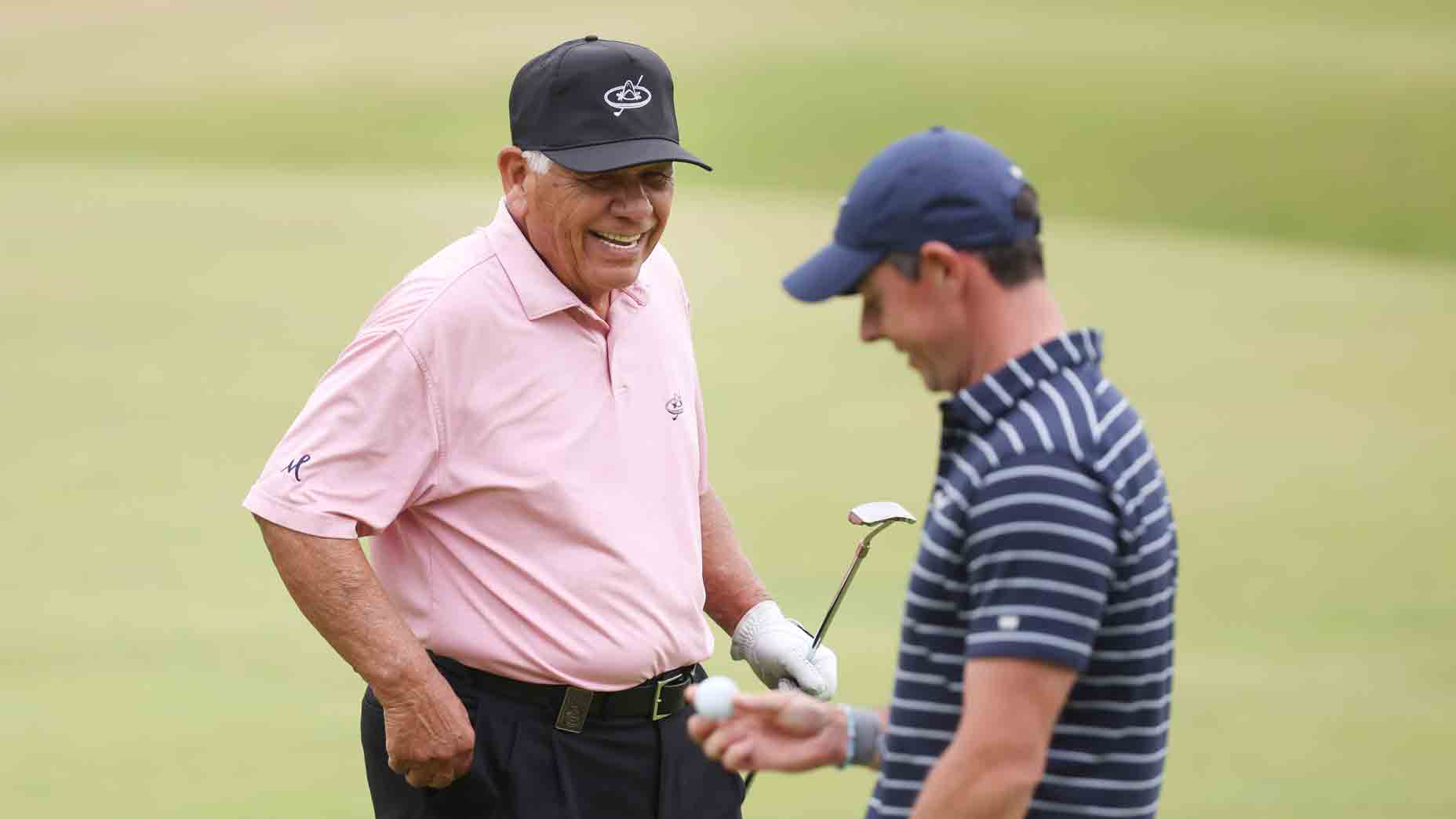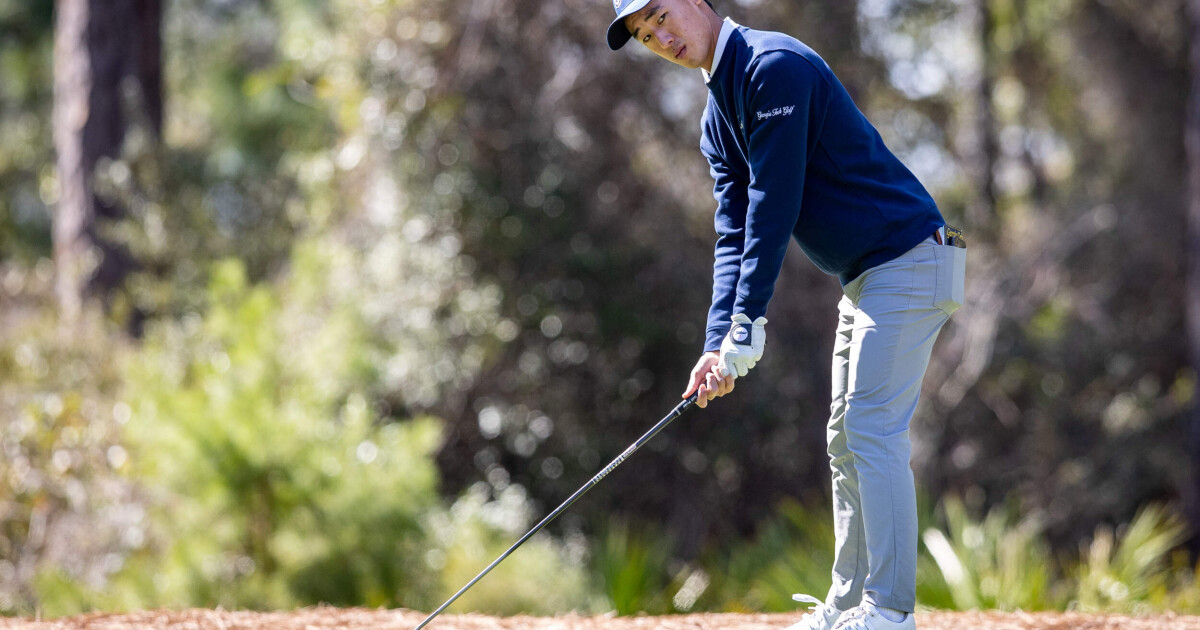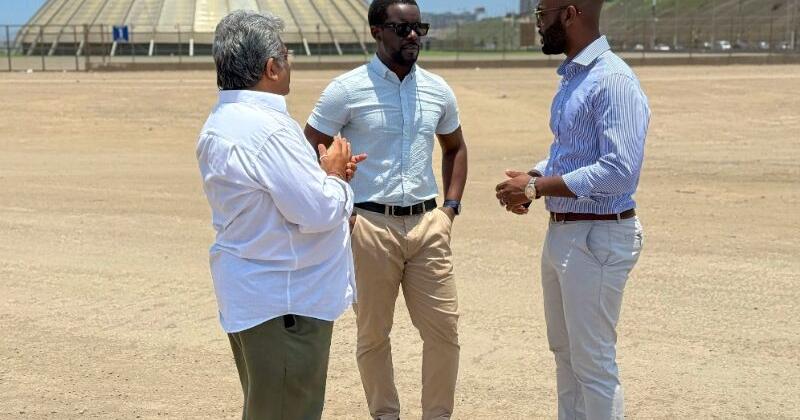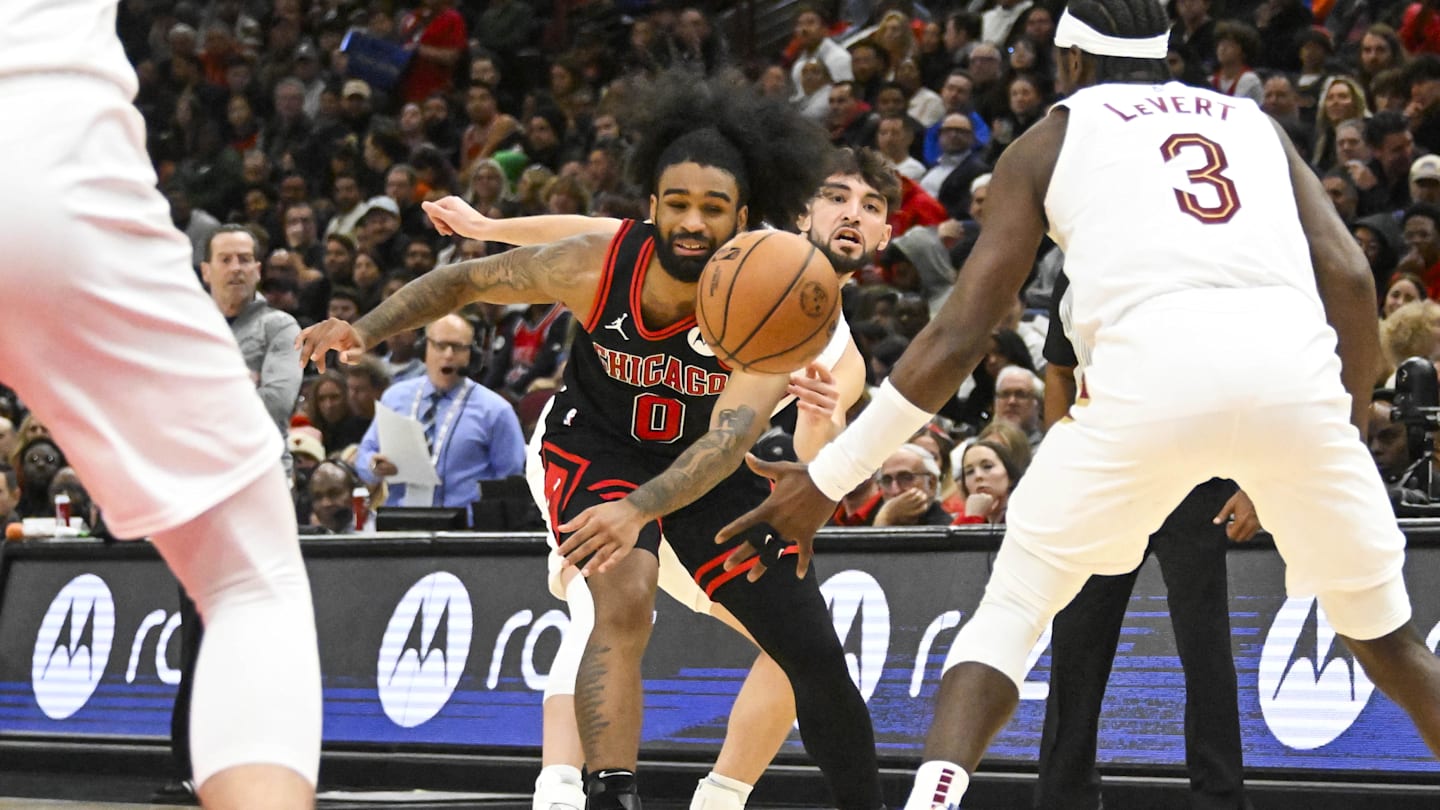Lee Trevino advice for Rory McIlroy, as told in a very Lee Trevino way

Lee Trevino, left, and Rory McIlroy at the 2022 Open Championship.
Getty Images
Lee Trevino says it was OK. He even repeated it. OK.
Really?
Hadn’t Rory McIlroy led by a couple of shots with five holes to go a few weeks ago at the U.S. Open — only to lose?
And hadn’t McIlroy overshot the green on Pinehurst’s 15th hole during the final round — with the club choice questioned by at least one commentator — and made bogey?
And hadn’t he missed from 2 feet, 6 inches away on the 16th hole, making bogey again?
And hadn’t he missed from 3 feet, 9 inches away on the 18th, with the tricky left-to-righter sliding past the right side of the hole? That led to another bogey — his third over his final four holes — and Bryson DeChambeau pounced. He won after hitting one of the Open’s more memorable strokes, a 55-yard bunker shot that finished 3 feet, 11 inches away on 18. And McIlroy was runner-up.
Which, Trevino said, was OK. Twice. He then added additional commentary, as you’d expect, as the six-time major winner is as colorful as his ball-striking is pure. He was talking this week on the A New Breed of Golf show on Sirius XM, and for clarity, below is the complete exchange with host Michael Breed, with the question asked by Breed:
“Lee, how does Rory recover from that debilitating loss at Pinehurst in the U.S. Open?”
“That’s OK. That’s OK,” Trevino said. “You finished second. What the hell? You could’ve finished third or fourth or fifth, you know? Be proud of what you did.
“He played extremely well.”
Trevino then noted DeChambeau. His bunker shot was exceptional.
“You got to hand it to Bryson,” he said on the show. “I mean, Bryson finished. I mean, that wedge shot — listen to me, I tell people that the hardest golf shot — there’s two of the hardest shots in golf: One is the next shot after a shank. That’s a hard shot. Once you shank one, then you got to go hit it again. That’s a very difficult shot.
“But the other one is when you got to hit a bunker shot in the 50-yard area, you know what I’m talking about? Because you got to get some of that ball. You can’t throw that sand that far. You got to get some ball out there. You got to play the ball back, you got to hit down on it, there’s a lot of things you got to do. And for that guy to hit it 4 feet …”
Trevino then went back to McIlroy. The putt on 18 was complicated.
“The putt that Rory had was the hardest putt in the world,” Trevino said on the show. “People don’t understand that. People saw him miss that 4-foot putt really poorly on 18, but you have to understand — that thing was slick, and it broke right. And the problem with that putt is you can’t hit it hard enough to hold the line. Because if you hit it hard enough to hold the line and miss it, in other words, it’s going to go 8 feet by. It’s a very difficult putt that he had.
“Yeah, it’s unfortunate. Unfortunate.”
As for McIlroy’s thoughts? It took a while to get to OK. Afterward that Sunday at Pinehurst, he peeled away without talking to reporters. He went to New York. Walked the High Line, Manhattan’s famous west-side, elevated walkway. Didn’t play three tournaments. When he returned, at last month’s Genesis Scottish Open, he was almost immediately asked about Pinehurst.
And he offered this lengthy response:
“I think the way I’ve described Pinehurst on Sunday was like it was a great day until it wasn’t,” he began. “I did things on that Sunday that I haven’t been able to do in the last couple years. Took control of the golf tournament. Holed putts when I needed to. Well, mostly when I needed to. Made birdies. You know, really got myself in there. And then, look, obviously unfortunate to miss those last two putts, or the putt on 16 and obviously the putt on 18.
“Yeah, it was a tough day. It was a tough few days after that, obviously. But I think as you get further away from it happening, you start to see the positives and you start to see all the good things that you did throughout the week.
“Yeah, there’s learnings in there, too, right. I can vividly remember starting to feel a little uncomfortable waiting for my second putt on 16, and you know, the putt on the last, it was a really tricky putt. And I was very aware of where Bryson was off the tee. I knew I had to hit it really soft. If the one back didn’t matter, I would have hit it firmer.
“But because I was sort of in two minds, I didn’t know whether Bryson was going to make a par or not, it was one of those ones where I had to make sure that if the putt didn’t go in, that it wasn’t going 10 feet by, which it very easily could have.
“Thinking back, yeah, maybe I was a little too aware of where Bryson was and what he was doing, but it was the nature of the golf course and how the golf course flowed. After the 14th tee, you’re sort of looking at 13 green, and then I had to wait on my tee shot on 15 before he hit, or you know, to let him hit his second shot into 14. Just the way the course flowed, it just made me very aware of what he was doing at the same time. So it sort of got me out of my own little world a little bit.
“But no, I mean, when I look back on that day, just like I look back on some of my toughest moments in my career, I’ll learn a lot from it and I’ll hopefully put that to good use. It’s something that’s been a bit of a theme throughout my career. I’ve been able to take those tough moments and turn them into great things not very long after that.”
Editor’s note: To listen to the A New Breed of Golf Show on SiriusXM, please click here.
Related
LAGC beats Bay to secure top playoff seed in TGL
Los Angeles Golf Club handed the Bay Golf Club its first loss in TGL action and secured the No. 1 seed in the playoffs by dominating singles to rally for a 5-3
TGL golf: Tommy Fleetwood beats Shane Lowry to top spot…
Tommy Fleetwood claimed bragging rights over Ryder Cup teammate Shane Lowry after helping Los Angeles Golf Club to a comeback vict
Tech Golf in 11th Place at Southern Highlands
LAS VEGAS – Aidan Tran posted a 1-over-par 73, pacing 16th-ranked Georgia Tech to a 14-over-par total of 302 for the round as brisk and windy conditions r















